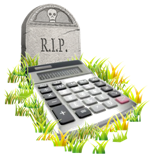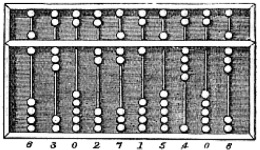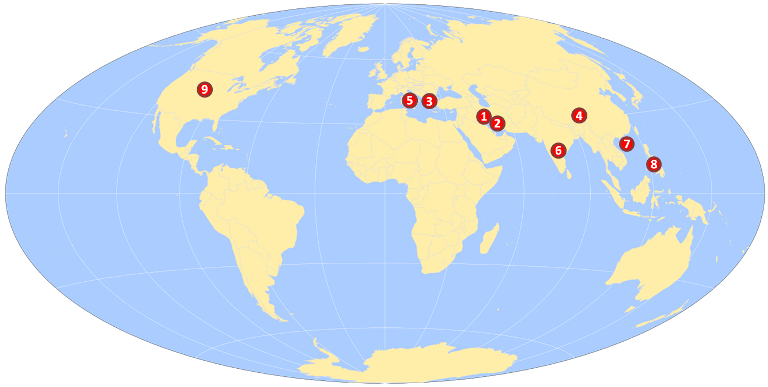Menu
History of Calculators
This article explores the history of calculators and looks at how calculators are part of our every day life. Calculators are everywhere but amazingly most of the time we fail to acknowledge their existence.
When we talk about calculators most people instantly have a vision of a small, portable, inexpensive pocket sized calculator. In fact this image is of an electronic calculator, typically used for completing basic arithmetic functions with scientific calculators available for the more technical amongst us. Its understandable that most of us think of calculators in this way, we have grown up with them around us. The small classic calculator (Casio and Sharp dominated the market in my school years, to own a casio scientific calculator was like owning an iPad in modern terms), is a tangible, ergonomic friend that helps us through the more taxing of problems like household budgeting, working out whether you can afford your dream home and so on. In modern times, calculators have gone from every day object to the dark corner of the kitchen drawers, the place reserved for obsolete goods, there our old friend the calculator sits with several old Nokia 3310 which still work despite not being charged for over 10 years.
 Modern home computers and more recently tablets and smart phones have replaced the electronic calculator. Specific task and activity relevant software applications calculators have won us over. We can now download, often for free, bespoke fit for purpose calculators that tell us how far we have walked, the number of calories we burn, how much our income is, how we spend our money, earning trends and more. The days of ferociously taping into our casio are well placed in history, little do we miss those desperate hours spent on complex mathematics homework, dreaming of reaching the end of the calculation without typing a wrong digit and having to restart our miserable effort.
Modern home computers and more recently tablets and smart phones have replaced the electronic calculator. Specific task and activity relevant software applications calculators have won us over. We can now download, often for free, bespoke fit for purpose calculators that tell us how far we have walked, the number of calories we burn, how much our income is, how we spend our money, earning trends and more. The days of ferociously taping into our casio are well placed in history, little do we miss those desperate hours spent on complex mathematics homework, dreaming of reaching the end of the calculation without typing a wrong digit and having to restart our miserable effort.
So, is the calculator dead? Before you say yes you must first consider this question - what is a calculator? As mentioned above the first image is our childhood friend the casio calculator (or sharp calculator for those who commented), but this is an electronic calculator, it is not the deity of calculators, simply part of the calculators evolution.
What is a Calculator?
Before we proceed, we must first reset our minds and firmly define what a calculator is.
Google defines a calculator as Something used for making mathematical calculations, esp. a small electronic device with a keyboard and a visual display. Given Google's place as an electronic super power its hardly surprising that the emphasis is on the electronic version.
The Oxford English dictionary has a similar slant with its calculator definition: something used for making mathematical calculations, in particular a small electronic device with a keyboard and a visual display: a pocket calculator. As you would expect the Oxford Dictionary is closer to the mark, Something used for making mathematical calculations, A more accurate definition, we feel, would be: Anything used for making mathematical calculations, typically a tool/object fashioned to capture/repeat mathematical sequences. This definition provides a wider, fairer playing field for the calculator and one which lends itself more accurately to the history of the calculator.
Is a Calculator a Computer?
Put simply, no. A calculator is not a computer but a computer can be a calculator. A calculator by definition is a tool/object used for specific structured calculations. As the calculator is structured it lacks the dynamics of a computer which is designed to allow a person to create algorithms, lines of code, sequences of events etc that cause an outcome. A calculator provides a result with defined parameters set at point of creation, a computer is designed to have no restrictions other than the capacity of the user who bends the logic of the system to create an outcome (game, application, graphic). Put simply, a computer uses mathematical calculations and algorithms to do amazing things, a calculator simply tells you what the calculation is (sometimes).
The First Calculator
 The Abacus is believed to be the first calculator though no doubt sand boards and stones (common in Early Egypt) were used prior to the abacus construction. The First abacus was used by the Mesopotamians (modern Iraq) and provided basic addition and subtraction. Incredibly Abacus remain in use today and for those who visit Asia (markets of china and Thailand) will see market traders and dockyard traders actively flicking beads across their bamboo abacus.
The Abacus is believed to be the first calculator though no doubt sand boards and stones (common in Early Egypt) were used prior to the abacus construction. The First abacus was used by the Mesopotamians (modern Iraq) and provided basic addition and subtraction. Incredibly Abacus remain in use today and for those who visit Asia (markets of china and Thailand) will see market traders and dockyard traders actively flicking beads across their bamboo abacus.
A Calculators History
The table below provides a timeline of the calculators development and use. Please contact us if you feel there are more dates or facts that should be added to to this article.
| When? | What? | Who? | Why? | Where? |
|---|---|---|---|---|
| 2700 BC | Sumerian Abacus | Unknown | Basic Addition and subtraction | Mesopotamia (Modern Iraq) |
| 600 BC | Persian Abacus | Traders | First recorded use of abacus by the Persian empire. | Persia |
| 500 BC | Greek Abacus | Traders | First recorded use of abacus in Greece. The Greek abacus was a table of wood or marble, pre-set with small counters in wood or metal for mathematical calculations. | Greece |
| 200 BC | Chinese Abacus | Unknown | The Chinese abacus, known as the suànpán (Counting tray), is typically 20 cm (8 in) tall and comes in various widths depending on the operator. It usually has more than seven rods. There are two beads on each rod in the upper deck and five beads each in the bottom for both decimal and hexadecimal computation. | China |
| 100 BC | Roman Abacus | Unknown | The Roman Abacus made use of the Roman Numeral system, counting in 10, 100, 1000s etc. The roman abacus has eight long grooves containing up to five beads in each and eight shorter grooves having either one or no beads in each. | Roman Empire |
| 500 AD | First use of Abacus in India | Unknown | Basic Trading and Accounting | India |
| 1600 | First abacus use in Korea | Unknown | Similar to the Chinese abacus and predominantly used for trade. | Korea |
| 1600 | First abacus use in Japan | Unknown | imported from China, the abacus is used for trade and called soroban (Counting tray). | |
| 1642 | Mechanical Calculator | Blaise Pascal | Initially built to reduce the labour of effort put into the calculating of taxes (Pascals Father was Supervisor of Taxes in Rouen | Rouen, France |
| 1851 | Arithmometer | Thomas de Colmar | The Arithmometer or Arithmomètre was the first mechanical calculator and was built specifically for use in offices. The Arithmometer was a game player and marks the changes from Human Computing to machine computing. | France |
| 1887 | comptometer | Dorr E. Felt | The Comptometer provided the first graphical user interface, sets of numbers keys that added or subtracted simultaneously providing faster keying times and improved workforce productivity. | USA |
| 1961 | First electronic calculator - Anita mk7 | Bell Punch Co | The first all electronic calculator. Anita is believed to be an acronym for either A New Inspiration To Arithmetic, or A New Inspiration To Accounting, though there is suggestion that this was also the name of the designer's wife. | United Kingdom |
| 1971 | First pocket calculator | The first pocket calculator was the Busicom LE-120A Handy and it enabled people to carry calculators to their workplaces wherever they may be. | ||
| 1975 | End of Mechanical calculator | N/A | Mechanical calculators become obsolete after 124 year reign as their younger brother the electronic calculator monopolises the market. | N/A |

Next: Who can get a buy-to-let mortgage?
Previous: How do buy to let mortgages work?